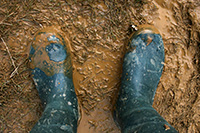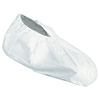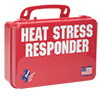Protective Footwear Standards

Occupational Safety and Health Administration (OSHA) requires that employers provide personal protective equipment (PPE) including protective footwear, if staff is exposed to hazards. OSHA aims to protect workers from foot injuries due to:
- Falling objects
- Rolling objects
- Puncture hazards
- Electric shock
The American National Standards Institute (ANSI) and the American Society for Testing and Materials (ASTM) have established footwear standards. They test footwear for resistance to impacts, punctures, heat, compression, and more. OSHA requires protective footwear must comply with ASTM and ANSI standards. Consult OSHA directly for more details.
Types of Occupational Safety Boots
Choosing the right type of safety boot depends on the work being performed and the possible hazards. Safety boots often provided ankle protection and support. They can be waterproof and insulate against cold/heat. Footwear should provide necessary protection, be maintained, cleaned, and sanitized as needed.
- Electric hazard shoes or boots are specially designed to protect you should you come in contact with live electric currents.
- Safety-toe or steel toe boots are common work boots, used in industrial and construction settings where foot accidents are likely.
- Slip resistant boots are best when working in wet or slippery conditions.
- Shoe covers are typically used to protect against contamination. Disposable shoe covers and dispensers are generally used in the medical or sterile settings. Waterproof shoe and boot covers protect shoes from water or wet conditions.
Shop Protective Footwear
NOTE: This information is a summary interpretation and was prepared as general reference material only. This summary is not authoritative as laws can be amended over time. For specific compliance requirements and updates, please refer to the actual code language and the statute or legal counsel.




